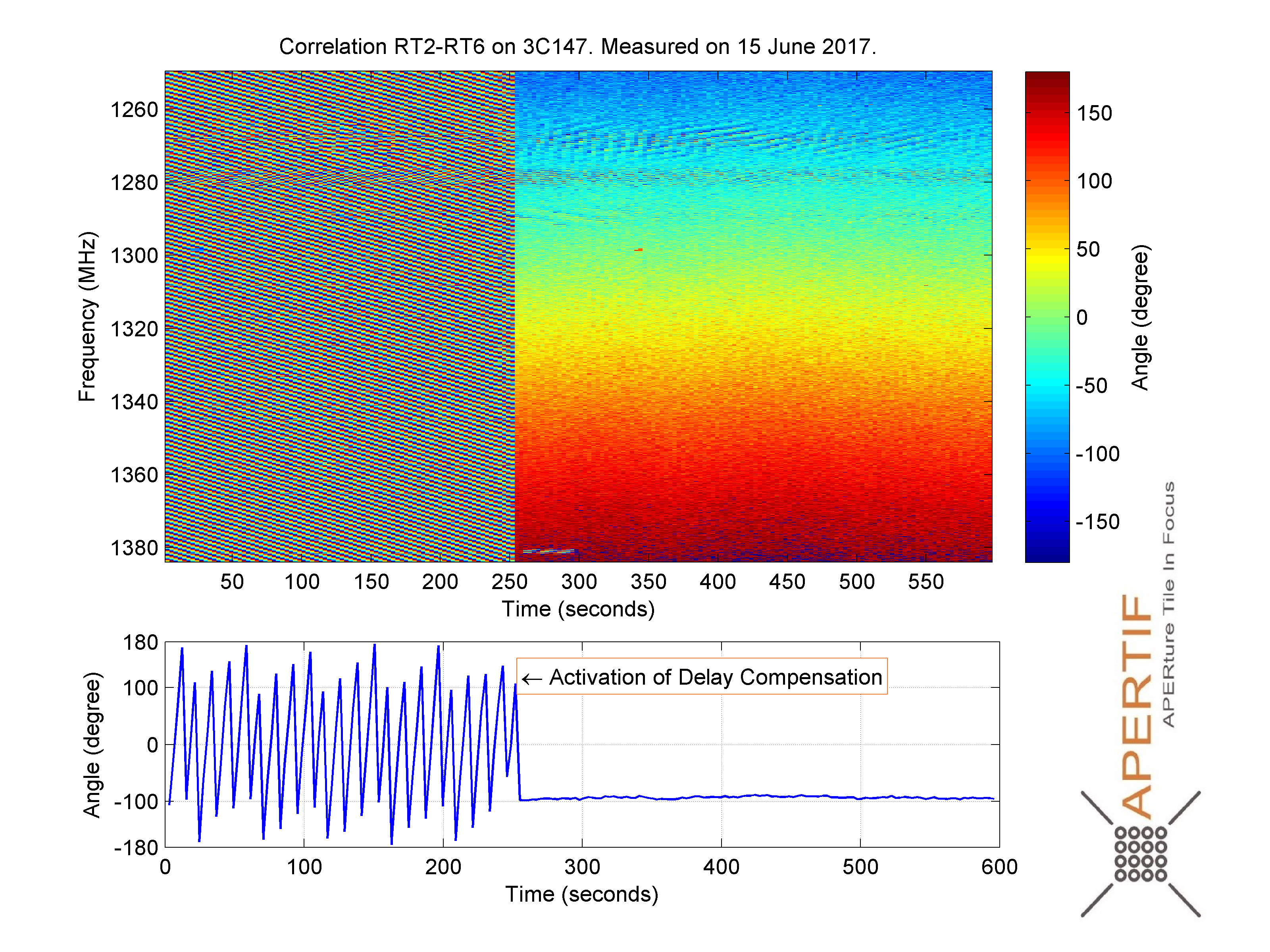Daily Image
05-07-2017First Light of APERTIF Delay Compensation and Fringe Stopping!
| Submitter: | Boudewijn Hut for the APERTIF team |
| Description: | We have been reporting on fringes every now and then to show the improvements in our new Phased Array Feed (PAF) system, APERTIF. The first daily image with fringes dates from 2008, showing the APERTIF precursor. Three years ago we used APERTIF hardware for the first time. At the end of 2015 we celebrated the first light of the APERTIF correlator. As of today, we are not going to show many fringes anymore. The APERTIF system is maturing and now the delay compensation stops the fringes! This daily image shows a fringe during the first 260 seconds of the observation. After 260 seconds, the delay compensation is activated and the angle of the correlation becomes constant in time (see lower panel). From that moment, all fringes are stopped. The top panel shows this for a bandwidth of 135 MHz and for two dishes that are 576 metres apart. Similar results were achieved with dishes RT2 and RTB, which are almost 1200 metres apart. With delay compensation in place we can now perform sensitive astronomical observations and do various validation tests. A short explanation of fringes: For an interferometer such as the Westerbork Synthesis Radio Telescope (WSRT), the relative times of arrival of a signal at the dishes depend on the position of the source with respect to the telescope. Due to the rotation of the Earth, the position of the source, as seen from the perspective of the telescope, changes over time. These varying delays cause fringes in the observed signals. The detection of the first fringes is always a cheerful moment, but actually these fringes are undesirable. To stop the fringes, the varying delays between the dishes need to be compensated in real-time. In APERTIF, this is performed in two stages. Coarse delays are compensated by introducing an integer sample delay in the digital signal processing chain. Delays smaller than one sample are compensated by applying a phase gradient over frequency, also in the digital domain. |
| Copyright: | ASTRON, 2017 |
| Tweet |  |
